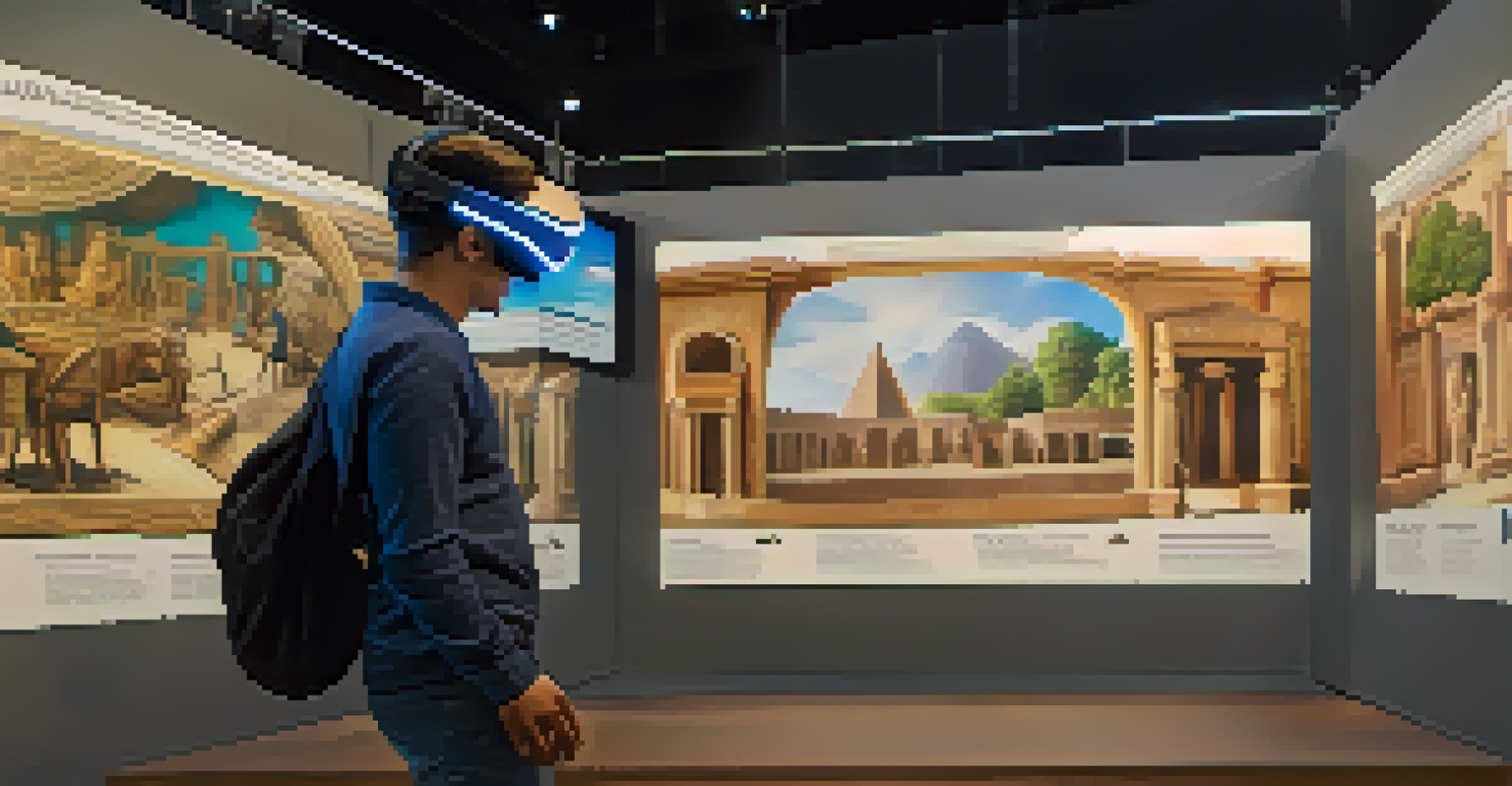Establishing Learning Experience Design as a Discipline

Understanding Learning Experience Design and Its Importance
Learning Experience Design (LXD) is a holistic approach that focuses on creating engaging and effective learning experiences. It combines principles from instructional design, psychology, and user experience to ensure that learning is not only informative but also enjoyable. By understanding the needs of learners, LXD aims to create environments where knowledge can flourish.
The best way to predict the future is to create it.
Think of LXD like crafting a delicious recipe. Just as a chef considers each ingredient's flavor, texture, and cooking method, a designer must consider various elements that contribute to an optimal learning experience. This could include the format of the content, the interaction style, and the learning environment. When these elements are harmoniously integrated, learners are more likely to engage and retain information.
Establishing LXD as a discipline is crucial because it emphasizes the importance of learner-centered design. As education evolves and technology advances, the need for effective learning strategies becomes even more pressing. LXD provides a framework that can adapt to these changes, ensuring that educational experiences remain relevant and impactful.
The Evolution of Learning Experience Design
Learning Experience Design has evolved significantly over the years, transitioning from traditional instructional design to a more user-centered approach. Initially, instructional designers focused primarily on the content and delivery methods, often overlooking the learner's perspective. However, as educational needs have diversified, the importance of understanding the learner's journey has come to the forefront.

This evolution can be likened to upgrading from a flip phone to a smartphone. The flip phone served its purpose, but it lacked many features that users desired, such as apps and internet connectivity. Similarly, traditional instructional methods may have been sufficient, but they didn’t fully address the complexities of modern learners' experiences or preferences.
LXD Focuses on Learner Engagement
Learning Experience Design emphasizes creating engaging and effective educational experiences by understanding learners' needs.
By recognizing this shift, educators and organizations can create more effective learning experiences that cater to individual needs and learning styles. The evolution of LXD reflects a broader understanding of how people learn, making it an essential discipline in today's educational landscape.
Key Principles of Learning Experience Design
There are several key principles that underpin Learning Experience Design, making it an effective approach to education. One fundamental principle is the focus on empathy, which involves understanding the learner's context, motivations, and challenges. By putting oneself in the learner's shoes, designers can create experiences that resonate on a personal level.
Education is not the filling of a pail, but the lighting of a fire.
Another important principle is iterative design. This process involves continually testing and refining learning experiences based on feedback from learners. Much like how a sculptor chisels away at a block of marble to reveal a masterpiece, LXD requires ongoing adjustments to uncover the most effective learning pathways.
Finally, the integration of technology is vital in LXD. Leveraging digital tools and platforms can enhance engagement and accessibility, making learning more interactive and enjoyable. By embracing innovation, Learning Experience Design can cater to modern learners' needs and preferences.
The Role of Collaboration in LXD
Collaboration is a cornerstone of effective Learning Experience Design. Designers, educators, subject matter experts, and learners should work together to create meaningful learning experiences. This collaborative approach ensures that diverse perspectives are taken into account, leading to richer, more engaging content.
Imagine assembling a jigsaw puzzle; each piece represents a different stakeholder's input. When all pieces come together, they form a complete picture. Similarly, collaboration in LXD allows for a more comprehensive understanding of the learner's needs, resulting in a well-rounded educational experience.
Collaboration Enhances Learning
Effective Learning Experience Design requires collaboration among designers, educators, and learners to ensure diverse perspectives are integrated.
Furthermore, collaboration fosters a sense of ownership among all parties involved. When learners feel their voices are heard, they are more likely to engage with the content and take responsibility for their learning journey. This shared commitment enhances the overall effectiveness of the learning experience.
Measuring the Success of Learning Experiences
Measuring the success of learning experiences is crucial for continuous improvement in Learning Experience Design. Various metrics can be used to assess effectiveness, including learner engagement, knowledge retention, and overall satisfaction. By analyzing these factors, designers can identify areas for improvement and make necessary adjustments.
Consider a gardener tending to their plants. They monitor growth, health, and blooming patterns to determine what changes might be needed. Similarly, in LXD, data-driven insights allow designers to cultivate richer learning environments that flourish over time.
Additionally, feedback from learners plays a vital role in evaluating success. Surveys, interviews, and informal discussions can provide valuable insights into what works and what doesn’t. This ongoing dialogue ensures that learning experiences remain relevant and impactful.
Challenges in Establishing LXD as a Discipline
While establishing Learning Experience Design as a discipline offers numerous benefits, it also comes with its challenges. One major hurdle is the need for a cultural shift within organizations and educational institutions. Moving from traditional teaching methods to a learner-centered approach requires buy-in from all stakeholders, which can be difficult to achieve.
Think of this transition like changing a company’s logo; it may meet resistance from those who prefer the familiar. However, just as a new logo can reinvigorate a brand, adopting LXD can breathe new life into learning experiences, making them more engaging and relevant.
Continuous Improvement is Key
Measuring the success of learning experiences through metrics and feedback is crucial for ongoing refinement in Learning Experience Design.
Another challenge lies in the rapid pace of technological change. Keeping up with new tools and platforms can be overwhelming for educators and designers alike. Continuous professional development and training are essential to ensure that those involved in LXD are equipped with the necessary skills to adapt to these changes.
The Future of Learning Experience Design
The future of Learning Experience Design is bright and full of potential. As technology continues to advance, LXD will play an increasingly vital role in shaping how we educate and engage learners. The integration of artificial intelligence, virtual reality, and other emerging technologies will allow for even more personalized and immersive learning experiences.
Imagine walking through a virtual museum where you can explore artifacts up close and interact with historical figures. This level of engagement is the future that LXD aims to create, making learning not just informative, but also a memorable adventure.

Moreover, as organizations recognize the importance of LXD, we can expect to see increased investment in this area. This will lead to more dedicated resources, training, and research aimed at enhancing learning experiences. Ultimately, the future of LXD holds the promise of transforming education into a more engaging, effective, and learner-centered journey.